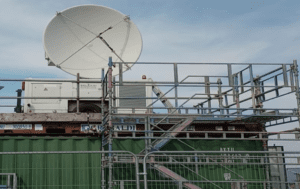Scientists use biofuel to power storm-tracking weather radar

Scientists used biofuel-powered weather radar for the first time this summer to observe stormy conditions in a more environmentally sustainable way.
A team of researchers led by the National Centre for Atmospheric Science (NCAS) have just completed a summertime observation campaign – known as *WOEST – focused on tracking turbulent processes in our atmosphere, with a view to improving forecasts of severe storms.
The world-leading team used a range of state-of-the-art technology to monitor the onset of thunderstorms in the south of England.
The team pioneered a novel approach, led by Dr Ryan Neely III, which saw two steerable weather radar set-up specifically to track and observe convective clouds at the same time that the FAAM Airborne Laboratory’s research aircraft flew overhead.
The pair of steerable weather radar were powered by GreenD+ HVO biofuel generators for the first time, instead of diesel fuel sourced from crude oil, which reduced greenhouse gas emissions by up to 90%.
GreenD+ HVO, also known as Enhanced hydrotreated vegetable oil, is a fossil-free paraffinic fuel made from 100% renewable raw materials. It is a more sustainable high quality fuel, which is suitable for diesel-powered vehicles and industrial powered generators. GreenD+ HVO is produced from waste fats and vegetable oils, and the fats are transformed into biofuel by hydrogenation.
















